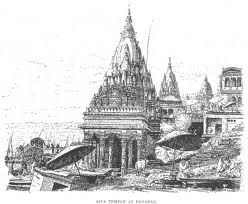The Saivite TraditionA Chapter by DayranYoga

From the Vedic experience (circa 2500 bc), that, which eventually came to be called Hinduism, traveled another 1000 years into the post-Vedic experience of Vedanta. But it was only in 500 bc that the classic legend of Krishna and the Mahabharata was reported to be written. There is however no record that the Mahabharata was practiced as an object of faith or as Hinduism at this time. No doubt it represented the continuity of the Veda and Vedanta tradition. Tamil culture, views its beginnings from the compilation of the Tolkapiyam, (500 bce). Thereafter, its development sees the advent of Shankaracarya, the logician and the Sivan/Sakthi concept in the 8th century bce. In its design of its vision, it provided its worldview as that of the two Adonai, Ganesha and Murugan. They were accompanied by their reverent parents Sivan and Sakthi. Today, Ganesha comes to represent the Western experience and Murugan, the Eastern. Such is the world family perceived by early Indian thought. Ganesha as the divine force and scribe, that viewed father and mother as its world, came to represent the Sankhya and Muruga, as the proverbial man of action, yoga. This is the current situation as far as the Indian's representation of himself and the world. The legends of Ganesha depict him as a man who died but was resurrected to life by the power of memory. In that he comes to bear a close resemblance to the life of Jesus. In common Indian experience today, the experience of Ganesha is viewed as the power of thought that encompasses one's expectations, desires and the fulfillment of promises. However, to take up the challenge of achieving such perceptions in one's experience, it is necessary to live the thought and express it in physical reality. In transforming such thoughts into reality, the Indian realizes that he is encountering old wine in new bottles. That which is expressed in the Puranas as symbols of ideals, is today represented in the world as physical objects. Hence, the issue of understanding the physical environment of the world becomes very important. For instance, in the Siva experience, his understanding of his consort Sakthi, is expressed in the modern context, as the knowledge of the physical world where this may include a study of science and the humanities. Such studies as we undertake must come back to affirm one's identity of oneself in a world context. In undertaking such a study, the student begins with the admission that all his thoughts and desires don't mean a thing without an achievement. A person is therefore not identified by their desires but by their actions. Such is the beginning of the man of renunciation who gives up all vanity of purpose and starts to build his understanding again brick by brick. The Sivan/Sakthi experience is something the individual is naturally born with, but it is of a substance of experience that comprises desires, not physical activity. In giving it up, the individual is preparing himself for regaining the experience through the conduct of his life. This is undertaken partly through school and college, a career and the carrying out of one's family responsibilities. Thereafter, one prepares to ' write one's memoirs' as it were, through the recapitulation of one's experiences and putting them in context. In doing so, the individual brings himself to encounter his fantasy of his early years and relate it to the life lived. In doing so, one questions the basic premises of the workings of the mind and thereafter restores it to its original experience. Its like taking a bike apart and then putting it together again. Such is the reportedly, great living experience of yoga in action. In the Vedic tradition, the individual is rehearsed through a process of offering his objects of attachments into the fire. In Vedanta, he realizes that his life-force is the great Vedic fire, into which he offers his notions of love and desires and renews them through the living experience. Life begins with dreams and attains the achievement of itself that it dreamt. Such affirmations of our experience in the conscious is what it seeks to bring to its Jivan perfection, the shape and design of the life form that will one day help it to live the perfect life in the universe. Hence our beginnings are as important as our achievement. The dream, very much the start of the process that helps us to achieve the final joy of physical experience. And so we continue to make the effort to understand. Sometimes we muddle through, but one is not unmindful of its purpose. Its taken us billions of years to get here. Man is perceived to have come into existence about 3.5 million years ago. In considering what we are coming to understand about ourselves today, this would be called a good start. The art of learning is indeed a curious one. It is first necessary to cultivate our relations with the object of knowledge. In studying about atoms, we don't become atoms. We are the man in the life, who comes to learn of atoms. There's a need to separate the domain and the epistemology of knowledge. Only then can a man say, ' I think I know.' © 2012 Dayran |
StatsAuthorDayranMalacca, MalaysiaAbout' Akara Mudhala Ezhuththellaam Aadhi Bhagavan Mudhatre Ulaku ' Translation ..... All the World's literature, Is from the young mind of the Original Experiencer. .. more..Writing
|

 Flag Writing
Flag Writing